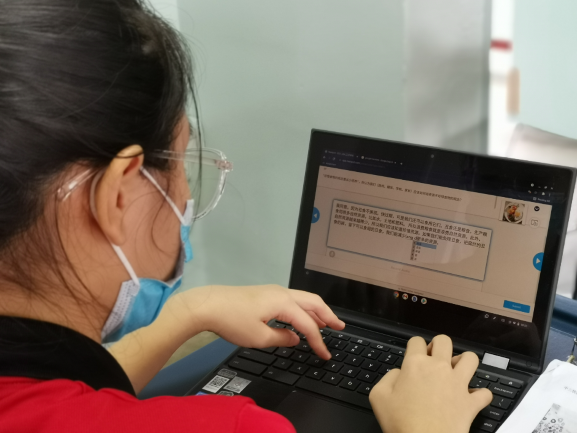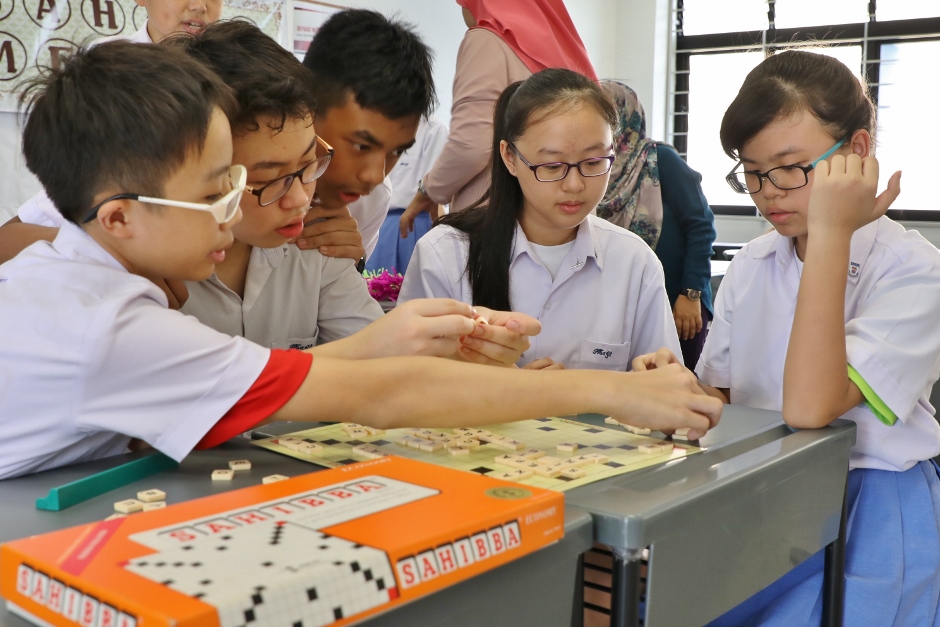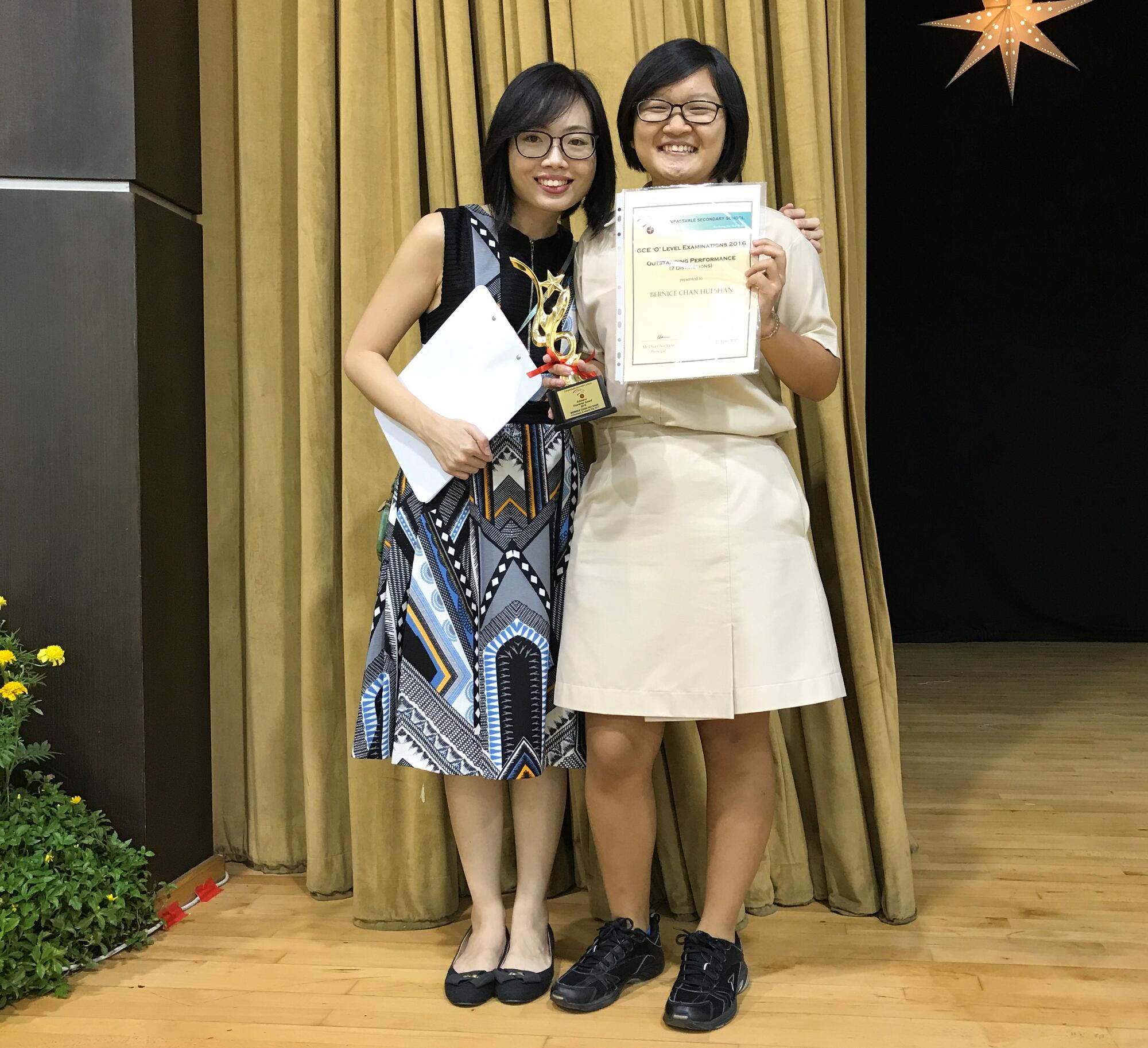In Mr G. Murugan’s Tamil Language class, students have their teacher’s blessings to create TikTok videos—but only for school, of course.
These videos were for Bendemeer Secondary School’s Tamil Language TikTok competition, just one of the diverse teaching and learning strategies that Mother Tongue Language (MTL) teachers are experimenting with to cater to students who may struggle to see Mother Tongue’s relevance in their lives; their teaching of Mother Tongue is not just to prepare students for exams, but rather to cultivate a lifelong interest in the language.
Tamil Language teachers in Bendemeer Secondary use Flipgrid, a site where students film themselves to participate in discussions. This in turn strengthens the students’ oracy skills. Flipgrid looks and works like a social media site, making online learning more engaging for the social media natives.

Bendemeer Secondary School Tamil Language students using Flipgrid to post videos of themselves speaking in Tamil, with fancy filters to jazz up their presentation!
That’s not all. Mr Murugan, Lead Teacher of the school’s Tamil Language Unit, shares how the Tamil Language teachers also use “various interactive web-based tools” like Edpuzzle (to embed MCQs or short-answer questions within educational videos), Go formative (where teachers can review and grade students’ work online, in real-time), Wordwall.net (with over 20 activity templates for gamifying quizzes), and more, to create an interactive learning environment.

Edpuzzle allows teachers to embed MCQs or short-answer questions within educational videos.
A happy coincidence amidst a difficult time
This year’s revamp of the secondary school Mother Tongue curriculum coincided with the COVID-19 pandemic. The new curriculum places emphasis on e-pedagogy, apt for this generation of students who may be more used to “performing” on social media than in the classroom. And it could not have come at a better time.
Educational technology has enjoyed a growth spurt across the globe since COVID-19 hit. Video conferencing tools, online teaching software, Learning Management Systems… Thanks to technological advancements, there is now a buffet of digital tools teachers can choose from besides familiar names like Zoom or Kahoot.
Transiting to fully online classes for the first time was not easy for teachers. “Full Home-Based Learning during the Circuit Breaker period in 2020 initially brought about new challenges and some anxiety,” says Ms Soh Bee Kim, Zhenghua Secondary School’s Head of Department for Mother Tongue Languages, “but teachers were able to quickly come together to select the most appropriate ICT tools and online learning platforms to help students cope with this new form of learning.”
For example, in Zhenghua Secondary School, Ms Lee Yung Wen’s Chinese Language class trains students’ language comprehension by using Nearpod – a platform that offers interactive slides, videos, games, and instant assessments. Students use the open-ended question tool to either type or record their responses in Chinese.

Zhenghua Secondary School Higher Chinese Language students using Nearpod to contribute responses to a shared page.
In this time of need, teachers have stepped up to the challenge and tapped on the wealth of modern educational technology to ensure as best an online learning experience they can for their students.
Our Mother Tongue Languages Live Beyond the Classroom
Crucial to teaching MTLs is helping students associate the language with contexts and uses beyond the classroom. Our MTL teachers have invented fun formats for students to practise their MTLs besides traditional school assessments.
In Zhenghua Secondary School, Ms Li Jiao’s students practise Chinese through speech-writing. During HBL, she tasked her Secondary 2 Higher Chinese Language class to draft a speech for a public audience. Students start off by researching sample speeches and relevant data to support their statements. The students’ scripts are checked for plagiarism, and finally, the students submit their speech drafts for both teacher and peer evaluation. “The activity helped students in many ways,” she says. “The feedback helped the students to beef up their speeches in terms of creativity and quality, and all of them were able to make improvements to their speeches.”
Over at Bendemeer Secondary, the Secondary 2 Express Tamil Language students would read Tamil passages about historical contexts in China, Sri Lanka, and India, with varying levels of assistance (one could opt to read the passage with annotations, or with a picture and video). Then, they would write comparisons and analyses of the texts. The learning was later consolidated in class with all students presenting their analyses and applying them to the Singapore context.
“The teachers also co-organised online Tamil language competitions with Tamil literary associations, such as Kavimaalai Singapore, Association of Singapore Tamil Writers, and Makkal Kavingnar Mandram, even amidst COVID-19”, says Mr Murugan.
Secondary 1 students participated in a TikTok competition, while Secondary 2 students took part in a debate competition. Secondary 3 students also participated in a competition, in which they could showcase their skills, such as acting, stand-up comedy, drawing, singing or crafting advertisements.
Mr Murugan adds, “Through these activities, students understood that the learning of Mother Tongue Language was not only about writing compositions and reading and listening comprehensions, but also about appreciating a rich history and culture.”
The Strengths of the Limitations
Of course, online learning comes with its own limitations. Yet, there are strengths to be found, even in the limitations.
Every student learns at a different pace, and online learning is more accommodating in this regard.
At Meridian Secondary, teachers integrate HBL into curriculum hours in the form of Independent Learning Days (ILD). Mdm Norazisza uses a Blended Learning approach, starting with a synchronous lesson – where all students are present and online with the teacher on our national e-learning platform, the Student Learning Space (SLS).
“Students then have an asynchronous HBL lesson where they can explore and consolidate their learning at their own time and pace,” explains Mdm Norazisza. To help students better wield their increased autonomy during ILD, she worked with fellow teachers to co-design rubrics for students to self-assess their progress and nurture independent learning.

From students’ responses through the poll in SLS, Mdm Norazisza’s students use the marking rubrics to self-assess their progress.
In an SLS email-writing lesson for Malay Language, Secondary 2 students listened to an audio story titled ‘Quarantine’ (wabak in Malay). One student suggested taking notes to consolidate key information. Mdm Norazisza agreed that this was a good idea and encouraged the class to do so as well, which affirmed the student’s spirit of self-directed learning. At the end of the lesson, she polled her students on their understanding of difficult words in the audio story and found that notetaking helped students understand and remember difficult words.

Kahoot is also used in Malay Language lessons to test students’ memory of new words and suffixes.
Online learning has had to come a long way in a short amount of time. HBL and social media are not going anywhere any time soon. Meeting students where they are, hence, partly involves going to the digital space with them for teaching and learning. With creative and judicious use of the various educational technology tools, our teachers have found ways to better cater to their students’ language capabilities. Technology aids them in creating an environment where students of all competency levels can take ownership of their own progress – and hopefully, deepen their students’ interest in Mother Tongue Languages.






.jpg)